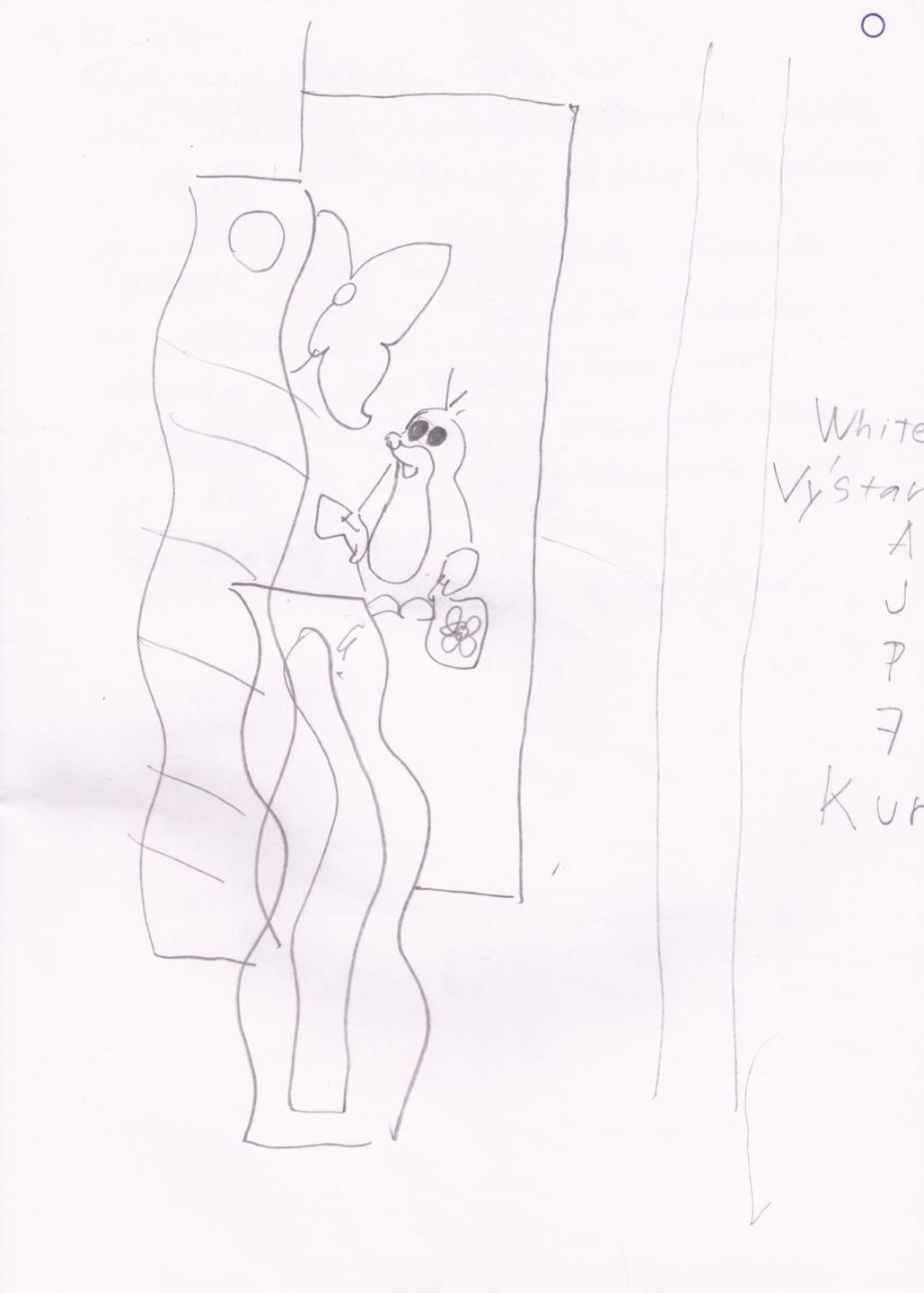
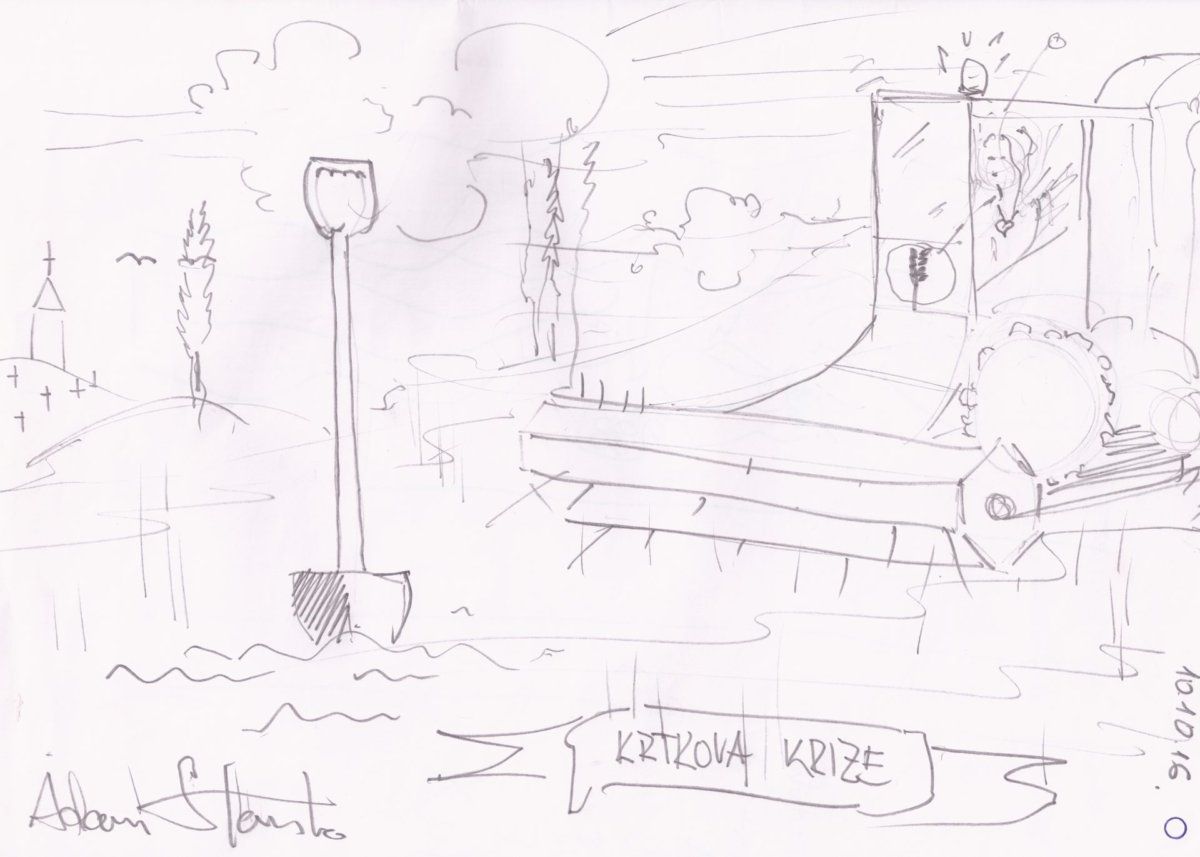
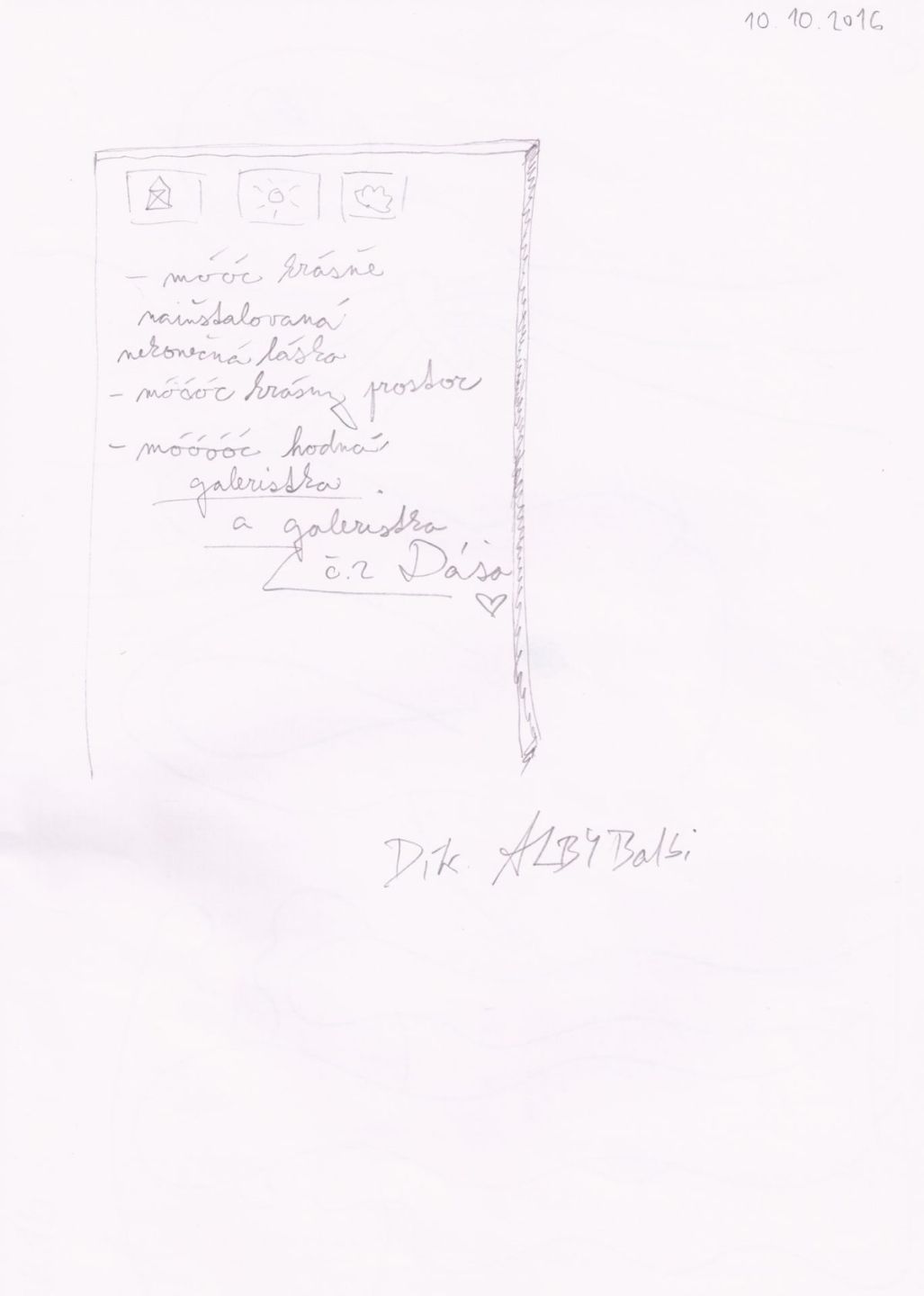
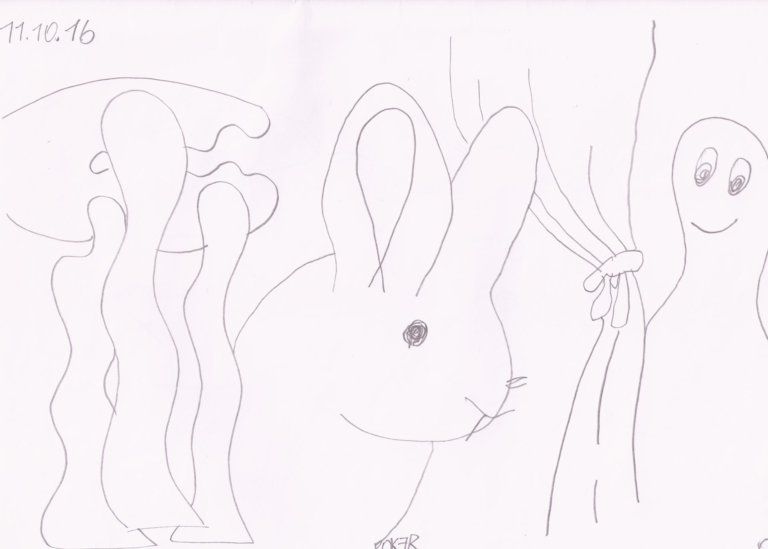
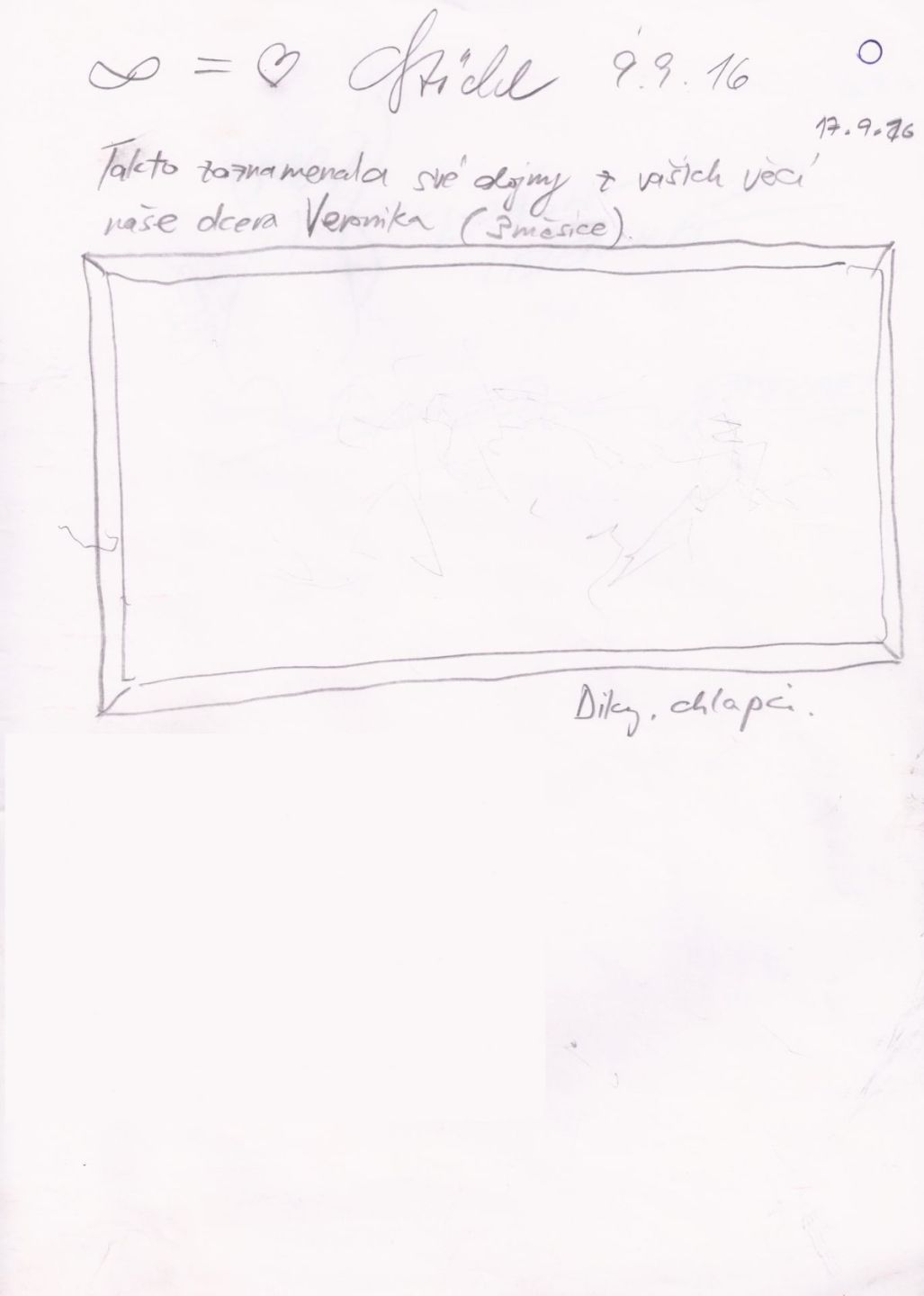
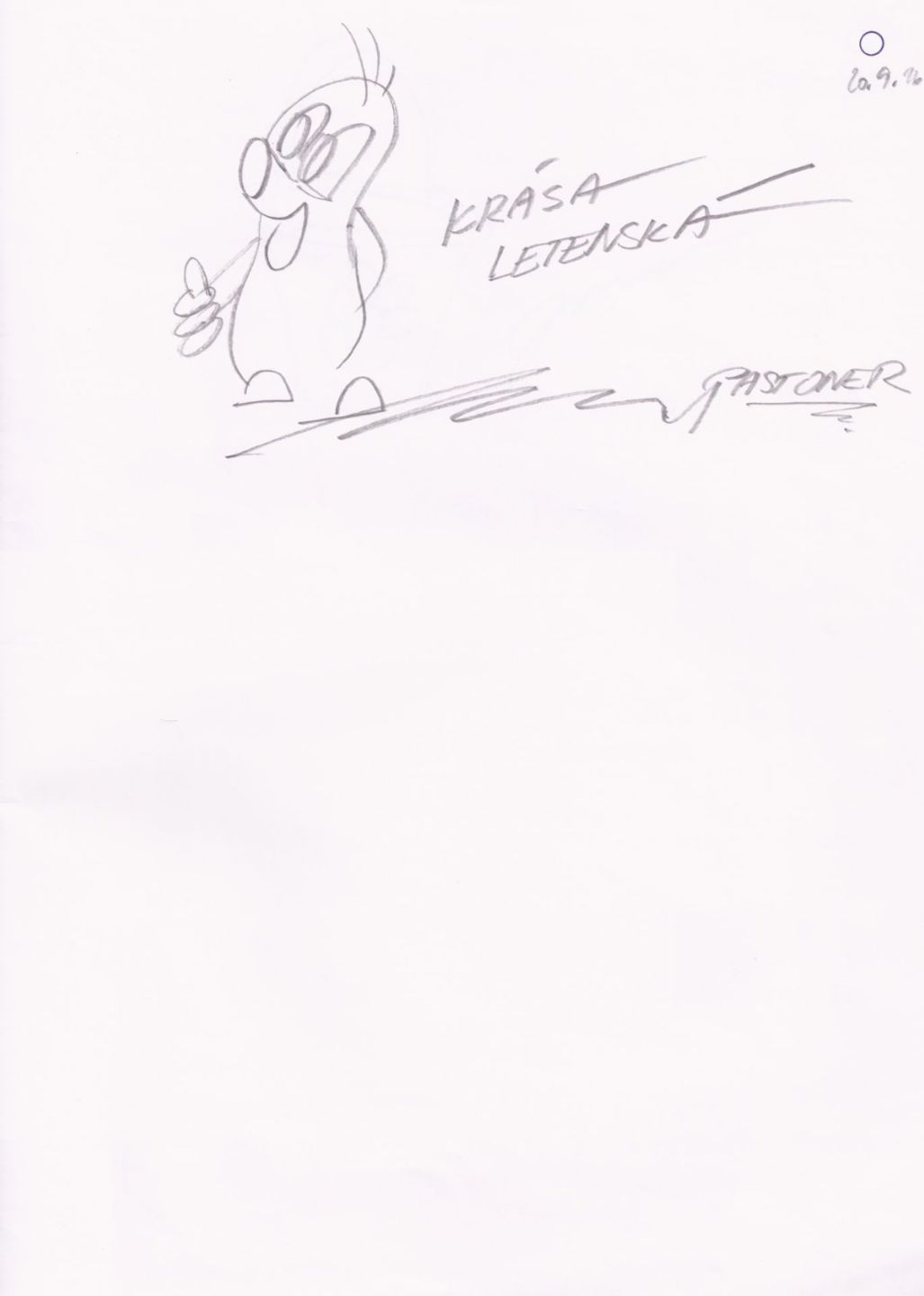
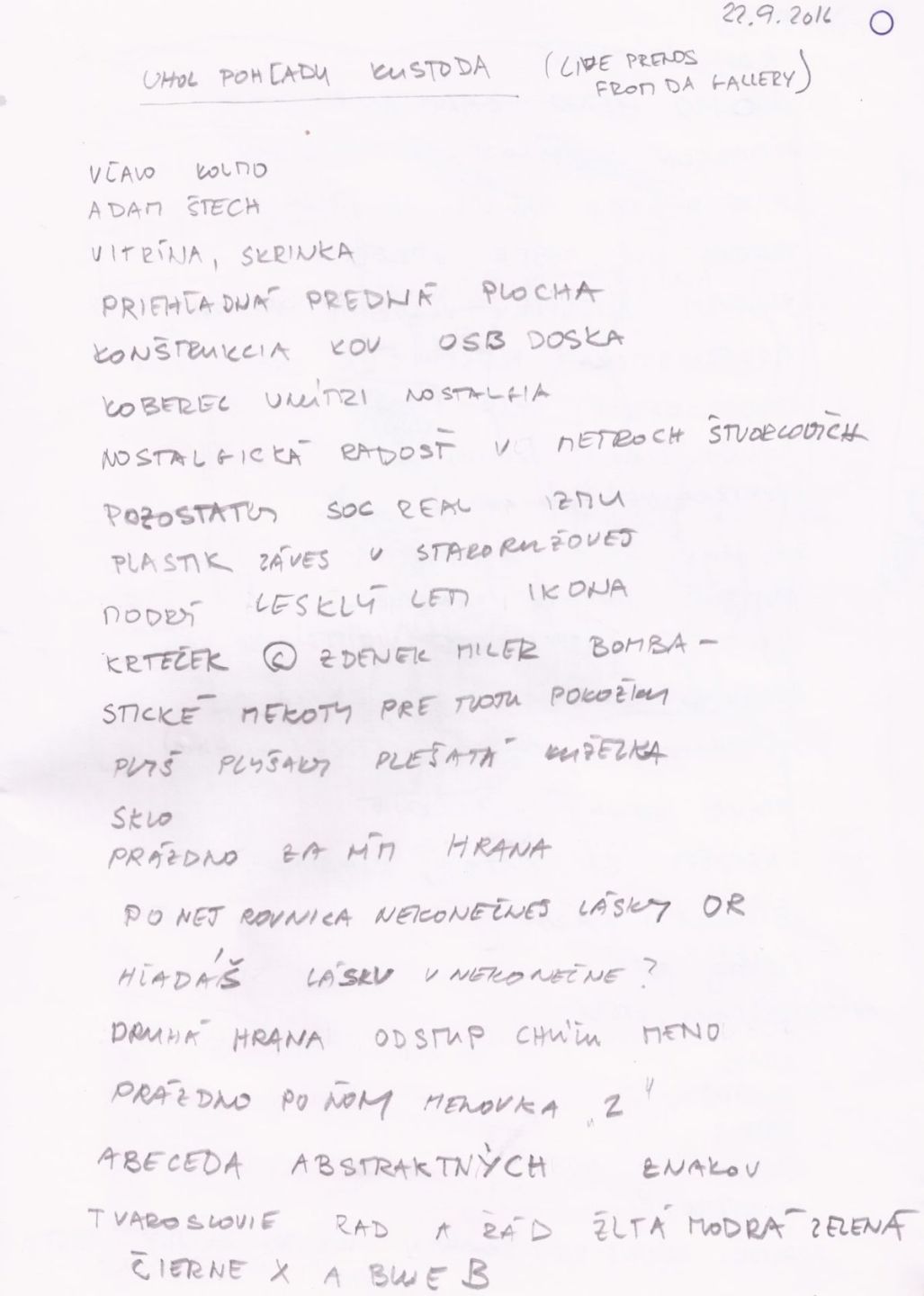
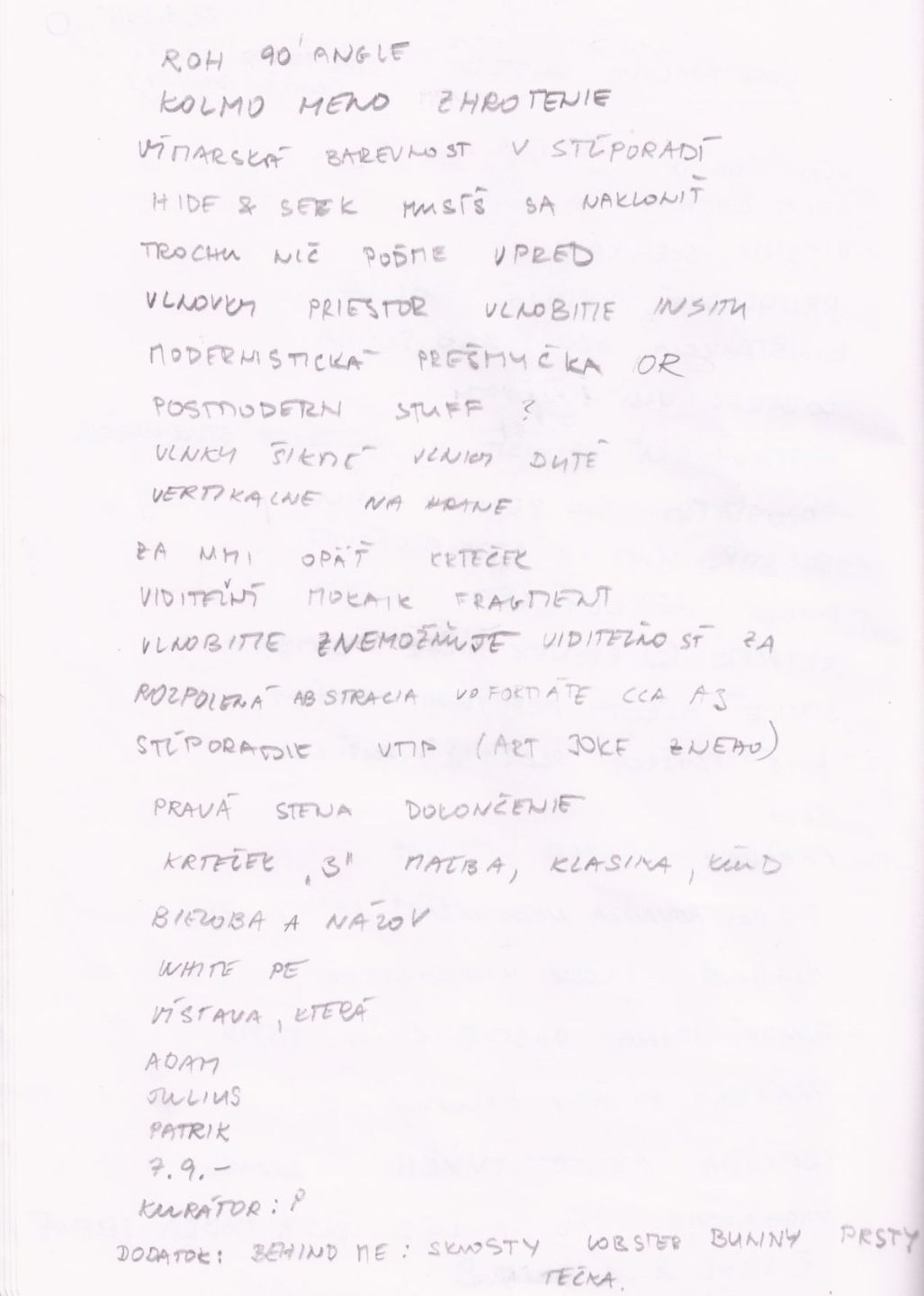
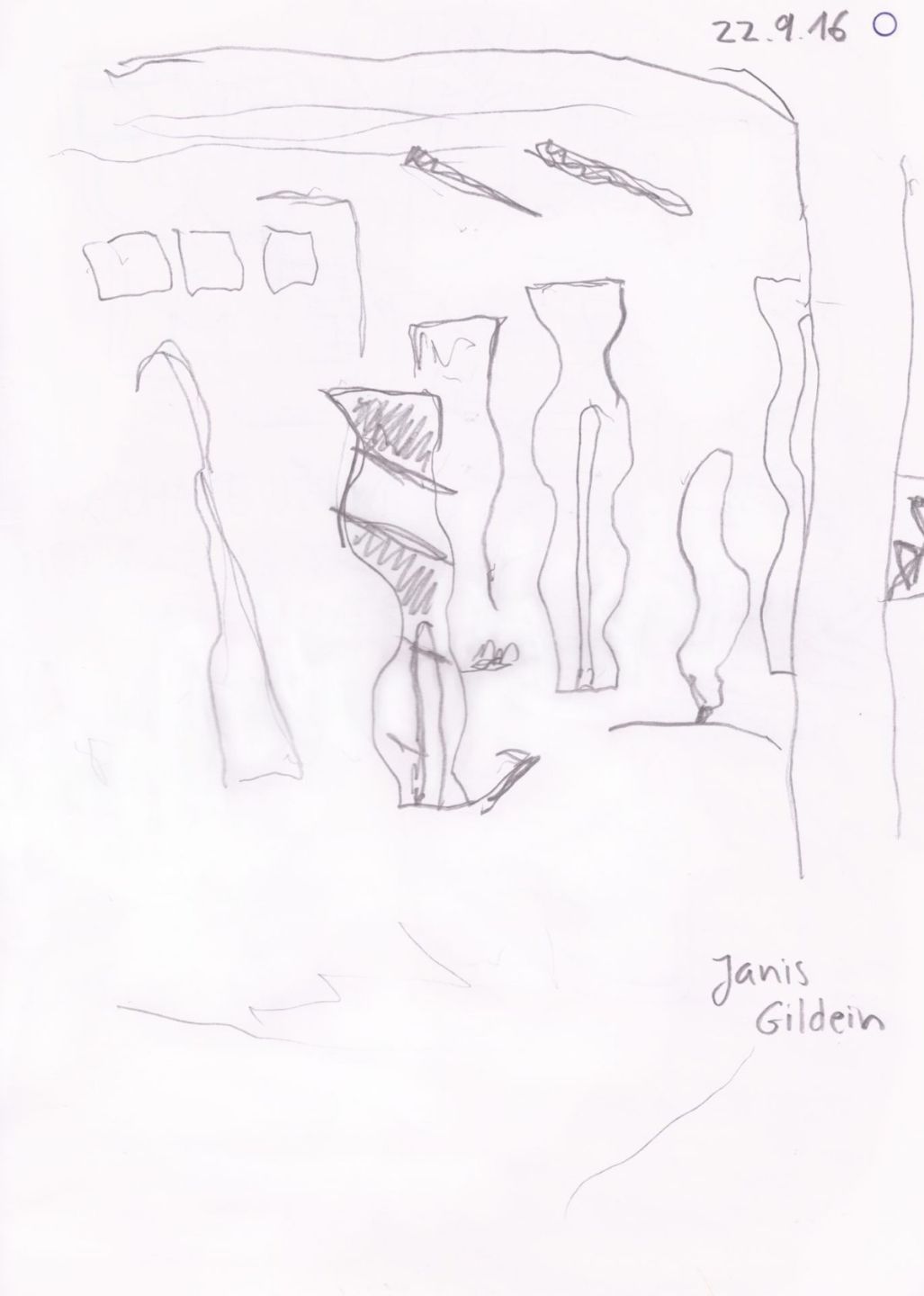
Julius Reichel, Adam Štech, Patrik Kriššák
Exhibition that will not be photographed
Adam Štech, who is known for his references to and interpretations of artistic “-isms” of the first half of the 20th century, in his trilogy on display now newly turns to narratives and formal solutions of the last metanarratives of the socialist aesthetics dealing with them through a dynamic fight of content and rivalling form. Julius Reichel enters the gallery space with a kind of “spatial sketch”, a multidimensional spatial painting that problematizes the configuration of the globalized and digitalized art world: “what is painting in the world of the Internet?”, “what is an exhibition?”, “what do we expect of art today?” The “guerrilla laboratory” of Patrik Kriššák then comes with the uncovering of the “tool” itself that belongs or wants to belong to all those who have something to say: Kriššák examines the nature of the sign itself or of the language as a system by which some things can be told while others can’t.
“The selection of works and artists followed an intuitive inner logic at first which later became quite clear. All these artists work in a certain connection to the formats and techniques of creative artistic “recycling”, conscious of certain visual patterns or ways of depicting in painting that are embedded in the initiatory steps of art modernism that they regard, however, critically or react to them in another way. The issue of recycling – in relation to questions in the works of individual artists – also led to considerations of the form of the exhibition’s presentation itself. We thought that an exhibition that opens the topic of and slightly critically approaches the practice of recycling of the historical formal material of the history of modern art should not itself “contribute” to it. Exhibitions today are often dematerialised by their own indispensable presentation and communication in the environment of the Web 2.0. The mental image of what is an exhibition often reflects its photographic documentation. Beside all the advantages of this global communicability of exhibitions, this trend of publicizing and sharing exhibitions also carries disadvantages in the form of continuous repetitive application of prefabricated and expected “looks” of an exhibition, or what it should look like, what defines it as an exhibition of contemporary art. A “situation” then becomes an exhibition in the collective consciousness as far as its distributed photographs resemble photographs of situations that have already gained the status of “exhibition”.
Exhibition that will not be photographed thus doesn’t want to be an exhibition that would be identified through digital photographs distributed on social networks and websites. “Since the beginning we wanted an exhibition that will entertain, that will offer a creative solution, that will be a commentary of the current exhibition practice. We wish it to be a transmedia event that is constantly taking shape in various mass media but always in a new and never redundant (i.e. “recycling”) way.” – Pavel Kubesa.